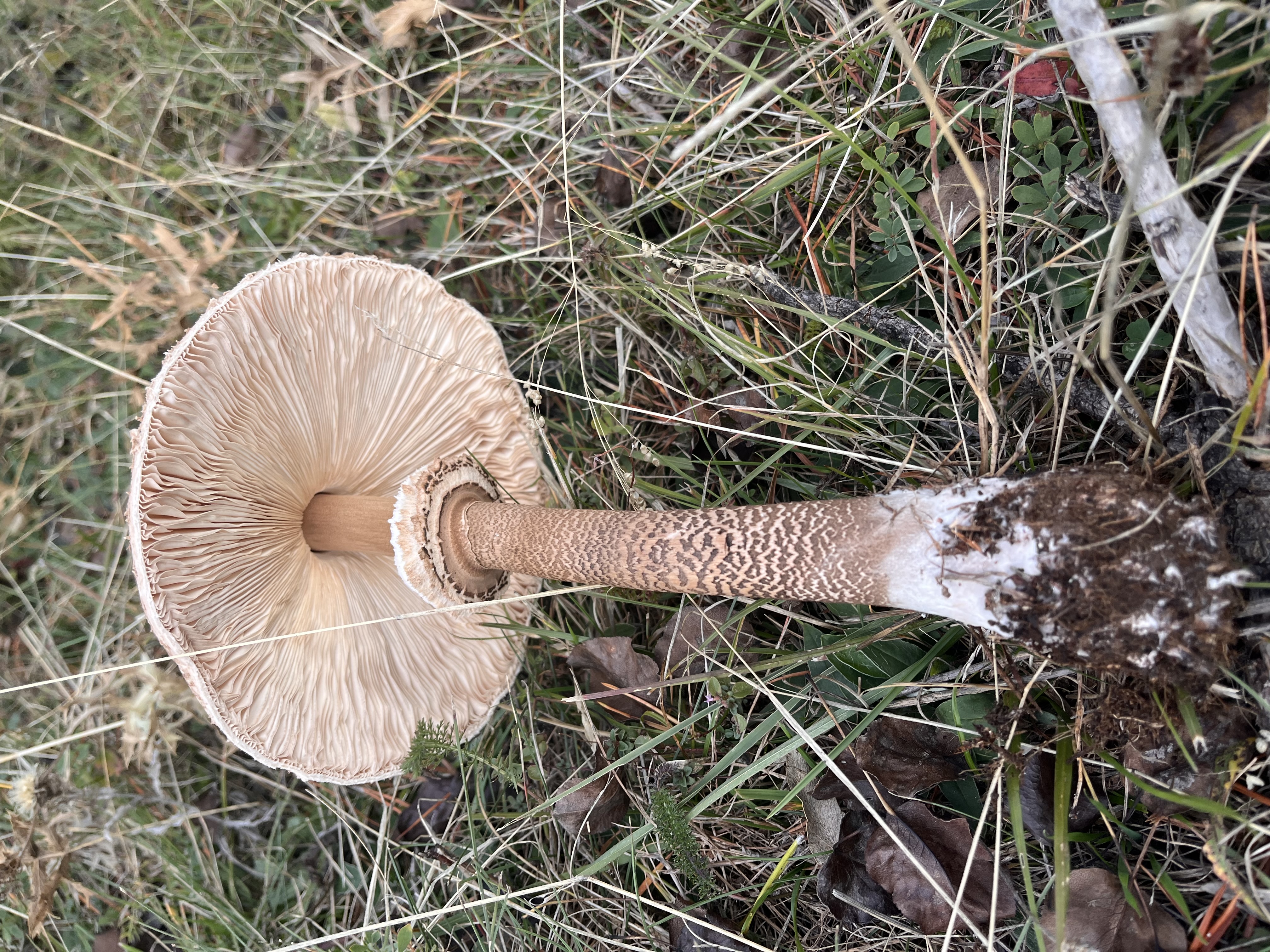Shaggy Parasol Complex
Chlorophyllum rhacodes
Large Scaly Mushroom: High Risk of Toxic Lookalikes

1 / 2
Tutte le immagini (2)
Caratteristiche Chiave
- Large cap covered in dark
- shaggy scales
- Free
- crowded
- white gills
- Tall stem with distinct brown snakeskin (reticulate) pattern
- Large
- movable
- double-edged ring (annulus)
- Bulbous base obscured by soil and debris
Colore:
White gills; brown scales over lighter cap; brown patterned stem
Odore:
Unknown
Schema di Crescita:
Single
Ambiente:
Soil and grass
Habitat e Distribuzione
Habitat:
Grassy area near trees (likely mixed woodland edge)
Distribuzione:
Widespread in temperate regions globally
Stagionalità:
Late summer through autumn
Caratteristiche determinanti per la conferma
- Spore print color is critical for distinguishing toxic lookalikes (e.g., C. molybdites)
- Context color change (bruising) is not visible
Valore Economico
Domanda di Mercato:
Unknown - high risk of misidentification prevents commercial use
Fascia di Prezzo:
N/A
Uso Commerciale:
None
Specie Simili
Green-spored Lepiota
Chlorophyllum molybdites
Differenze Chiave:
- Spore print is green (not white)
- Context does not typically stain red/orange when cut
- Often lacks the strong snakeskin pattern on the stem
Parasol Mushroom
Macrolepiota procera
Differenze Chiave:
- Cap scales are finer and flatter, not shaggy
- Stem pattern is usually more pronounced and less shaggy at the base
Deadly Dapperling
Lepiota brunneoincarnata
Differenze Chiave:
- Significantly smaller size (cap diameter typically < 5 cm)
- Stem lacks the prominent snakeskin pattern
Azione Consigliata
Do not consume. Requires spore print and context bruising test for definitive identification.